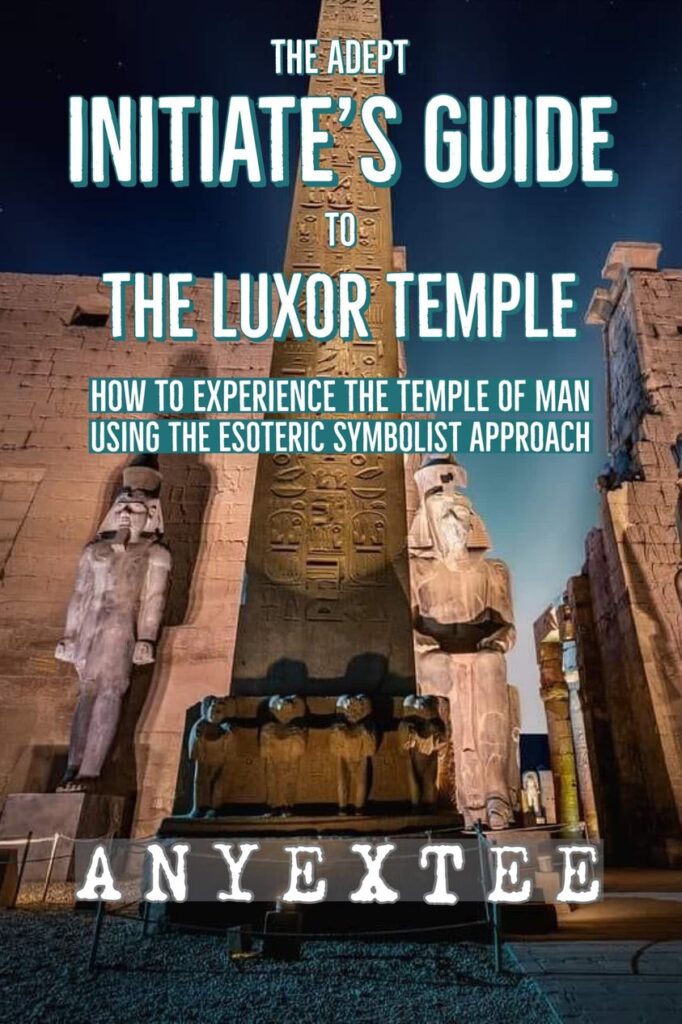
The Adept Initiate’s Guide To The Luxor Temple: How To Experience The Temple Of Man Using The Esoteric Symbolist Approach
We often consider subjects like archaeology and anthropology to be nothing more than studies of the past, especially when it comes to civilizations like the ancient Egyptians, who existed thousands of years ago in a world very different from our own.
While we can still go today and marvel at their magnificent structures, many think of these ruins simply as lost remnants of a long-gone society, with little relevance to the here and now.
But thanks to the groundbreaking work of French chemist, alchemist and esotericist R.A. Schwaller de Lubicz (1887-1961), it’s become abundantly clear that the ancient Egyptians still have much to teach us that can aid us in the present.
While Schwaller wrote about nearly every facet of ancient Egypt, his main focus was Luxor Temple. To the Egyptians, he argued, the temple was not merely a place of worship, but a living school dedicated to man and his role in the cosmos.
When constructing their temples, the Egyptians did not merely attempt to create something aesthetically pleasing. Rather, everything from a temple’s dimensions to the number of columns to the placement of particular blocks of stone were all deliberately carried out with a greater teaching in mind.
Schwaller referred to this Pharaonic philosophy as the Sacred Science. And while the pharaohs may be long gone, the Sacred Science is as relevant as ever, as it deals with the fundamental laws of the universe and man’s relationship to them. Though some of its reliefs may have faded and its rooftops partially collapsed, Luxor Temple remains an invaluable tool for studying the Sacred Science even thousands of years after it was built.
As important as R.A. Schwaller de Lubicz’s books are, they’re by no means easy reads. In the 1970s, writer, researcher and tour guide John Anthony West helped make Schwaller’s teachings more palatable to a wider audience with his book Serpent in The Sky. To this day, it remains the best overall introduction to Schwaller’s work and, moreover, the philosophy of the ancient Egyptians.
Now in the 21st century, my aim with this book is to keep the torch of the esoteric tradition lit, guiding a new generation of travelers and seekers looking to experience Luxor Temple through the eyes of the symbolist.
Largely based on the work of Schwaller and West, my personal mentor, this book will guide you through each part of the temple, explaining it all from both a historic and symbolist perspective. But it also brings a plethora of new information to the table.
Not only will you get the latest information based on recent archaeological findings, but you’ll find a detailed summary of the reliefs of each room, together with translations of some of the most important hieroglyphic inscriptions.
Taking things a step further, included at the end is a Practical Applications section which draws from numerous esoteric and mystical traditions. These exercises help one directly experience the Temple of
Man, going beyond just understanding it on a cerebral level. As you make your way deeper into the temple, you’ll be guided through a variety of meditation, visualization and mindfulness techniques that you can try at your own pace.
Anyone today may be able to buy a ticket and walk through Luxor Temple, but touring the Temple of Man through the symbolist perspective could be thought of as a sacred initiation. Not only will the experience help you broaden your understanding of the mindset of the ancients, but entering the temple is the first step forward toward learning more about yourself.
